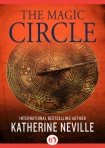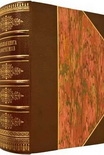The Magic Circle Katherine Neville (top 100 novels of all time TXT) 📖

- Author: Katherine Neville
Book online «The Magic Circle Katherine Neville (top 100 novels of all time TXT) 📖». Author Katherine Neville
“But I’ve seen you jump off a cliff,” said Wolfgang, still smiling. “Yet you imagine you cannot release yourself enough to dance in the deep powder. Do you see what a powerful thing belief can be—that in fact it’s really through your own choice you’ve decided you can do the one thing but not the other?”
“At least I know what I believe about Sam’s grandfather,” I said, avoiding Wolfgang’s observation. “I think his real hope was to distance Sam, his only grandchild, from my side of the family. We are a bit peculiar. But from Dark Bear’s point of view Sam and I may have been becoming too close for comfort. The Nez Percé are strict about bloodlines. As Sam’s cousin, I would have been considered forbidden fruit: intermarriage isn’t permitted even among more distant relations—”
“Marriage?” Wolfgang cut in. “But you said you were only a child at the time.”
Damn. I could feel the hot blood creeping into my cheeks as I tried to duck my head. Wolfgang put his finger under my chin and tilted my face up to his.
“I have a belief of my own, my dear,” he told me. “If this cousin of yours were not prematurely deceased, I believe I’d be quite alarmed by this blushing confession.”
Just then—thank heaven—over the loudspeaker they called our plane.
During the long flight to New York, Wolfgang filled in some of the blanks he’d skimmed over yesterday with respect to our impending mission inside the Soviet Union for the International Atomic Energy Agency. But when it came to the background of the IAEA, I already knew quite a bit.
Anyone who toiled as I did in the nuclear field was known as a “nuke” and was almost universally disdained and loathed. Note the popularity of slogans such as No Nukes Is Good Nukes or The Only Good Nuke Is a Dead Nuke—deep wisdom of the bumper-sticker school of philosophy.
The chief mission of Wolfgang’s employer was channeling nuclear materials into peacetime and positive uses. These included diagnosis and treatment of disease, elimination of the toxic pesticides of the past century through programs like insect sterilization, and the development of atomic energy, which now supplied seventeen percent of the world’s electricity while significantly reducing pollution from fossil fuels and cutting down on strip mining and deforestation. All of which gave the agency the necessary clout to enforce the safeguarding of weapons-grade materials as well. And a recent nuclear fiasco might have pushed that door open a crack wider.
Six months after the 1986 accident in Ukraine, the IAEA began to require early information on all accidents that threatened to have “transboundary effects”—like that mess at Chernobyl, which the Soviets had tried to deny until radiation was being detected all across northern Europe. A year later the IAEA created a program to counsel member states about waste hazards of the sort Olivier and I tackled daily in our jobs. Then only a few months ago, the agency added far tougher provisions against illegal transport and dumping of radioactive waste. But though the Chernobyl disaster triggered many of these changes, to the public at large it had never been made clear why.
Chernobyl was a breeder reactor, the kind the Soviet and U.S. governments, among others, had long supported, but which the public instinctively and universally feared. Perhaps with good cause. As the name suggests, a breeder reactor actually produces more fuel than it consumes—like the technique of the legendary Mountain Men of the Rockies that I’d once taught Olivier for growing a “sop,” the sourdough starter used in leavening bread. You take a little nuclear leaven, a fissile material like plutonium-239, and add batches of ordinary stuff like uranium-238, which is in itself unsuitable as a fuel. You wind up with a bigger load of leaven—more plutonium—that can either be recycled as nuclear fuel or be diverted into making bombs.
Because breeders are so commercially viable, the Russians had run them for decades, and so had we. Where had all that plutonium gone? Well, as for the U.S. during the Cold War, there was little mystery: It was recycled into warheads, enough for everybody in America to have a few in his garage. But when it came to the Russians’ hot waste, I had the feeling we might soon find out—when we got to Vienna.
The International Atomic Energy Agency sits on Wagramer Strasse beside the Donaupark, on an island enfolded by the arms of the old and new forks of the Danube. Across the glassy expanse of river lies the Prater with its famous giant Ferris wheel—the same amusement park where, seventy-five years earlier, my grandmother Pandora spent the morning riding on that carousel with Uncle Laf and Adolf Hitler.
At nine A.M. on Tuesday, Wolfgang’s colleague Lars Fennish was waiting to collect us and our bags at the Flughafen and to drive us into town for today’s meetings. After my long, exhausting journey with little sleep, I sat in the backseat, not really wanting to talk. So while the two men conversed in German about our schedules and plans for the day, I gazed out the blue-tinted windows at the dreary suburban view. But as we approached Vienna nostalgia swept me, and I was plunged into the past.
It was nearly ten years since I’d been in Vienna, but till this moment I never realized how I’d missed the city of my childhood: all those Christmases and holidays spent with Jersey amid the musical milieu at Uncle Laf’s—eating sugar cookies, opening ribboned gifts, and hunting for Easter eggs. My personal image of Vienna was richer and more multilayered than the schmaltzy image the city presented to the rest of the world: as Uncle Laf put it, “the town of Strudel und Schnitzel





Comments (0)